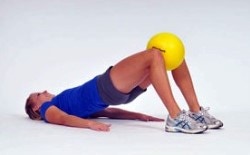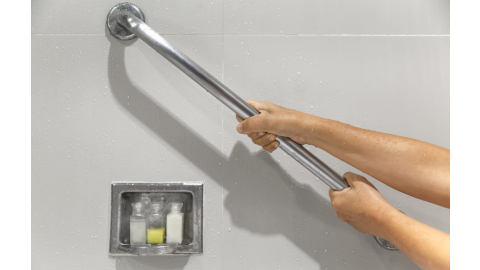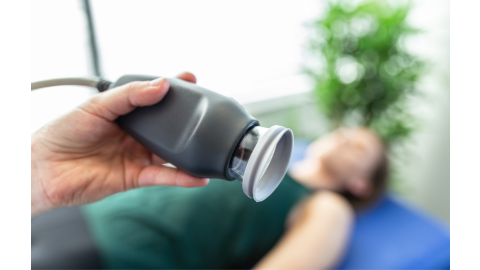Now that you’ve gone through delivery and have your baby in your arms, balancing motherhood and self care is the new normal. So, while you’re taking care of the needs of that little bundle of joy, your postpartum body has needs too. This isn’t about fitting into your pre-pregnancy jeans or a number on the scale, but rather making sure you’re the strongest woman and mom that you can be.
All of that starts with the pelvic floor.
What is the pelvic floor?
Your pelvic floor muscles are between your tailbone and your pubic bone and span the entire width of your body. Want to know exactly where they are? They’re the muscles you tighten to stop urinating. They support everything from the bowels and bladder to the uterus and vagina. Not only are these the very muscles that helped deliver your baby, but they also do some other pretty major things like helping to control your bladder and even your sexual response.
Why should the pelvic floor be the centerpiece in your postpartum exercise journey?
Childbirth can weaken the muscles of your pelvic floor and cause problems for you later in life. Though you shouldn’t start any exercise program without first speaking to your doctor (and listening to yourself and your own body), when you are ready, be sure to pay attention to the pelvic floor.
Without strengthening it again, you could experience fun things like incontinence or leakage of urine when you sneeze.
How do you start strengthening the pelvic floor?
Kegels
You may have heard about kegel exercises before – these exercises strengthen the pelvic floor. Do your best to relax your abdominal muscles. Don’t bear down (the opposite of labor!) or hold your breath. Slowly squeeze while increasing the tension until you have contracted your pelvic muscles muscles as hard as you can. Release gently and slowly.
If you want to take your kegels to the next level, try using a kegel exercise system. If you use these weights for 15 minutes twice a day, you should see results in 12 weeks. Simply insert the kegel weight in your vagina. Your muscles–the ones we’ve been talking about–will naturally contract around the weight. Overtime, these contractions will strengthen and tone your pelvic floor muscles. After 15 minutes, just remove the weight using the attached cord.
The Bridge Squeeze

- Lie on your back with your arms by your sides and knees bent.
- Place a small exercise ball between your knees and squeeze the ball and your glutes as you lift your hips up to the ceiling into a bridge position.
- Hold for six seconds, then slowly lower. Repeat 10 times.
Recap
At this point, you’ve probably realized that the word “mom” has become a synonym for multitasking. The great thing about these exercises and taking care of your pelvic floor in general–which is so very important–is that you can do it while feeding the baby or before you go to sleep at night, whether you go back to work or plan on staying home. Standing, sitting, or lying down, you’re good to go when it comes to strengthening that integral pelvic floor.
Medical Disclaimer: The information provided on this site, including text, graphics, images and other material, are for informational purposes only and are not intended to substitute for professional medical advice, diagnosis or treatment. Always seek the advice of your physician or other healthcare professional with any questions or concerns you may have regarding your condition.








 France
France Australia
Australia





